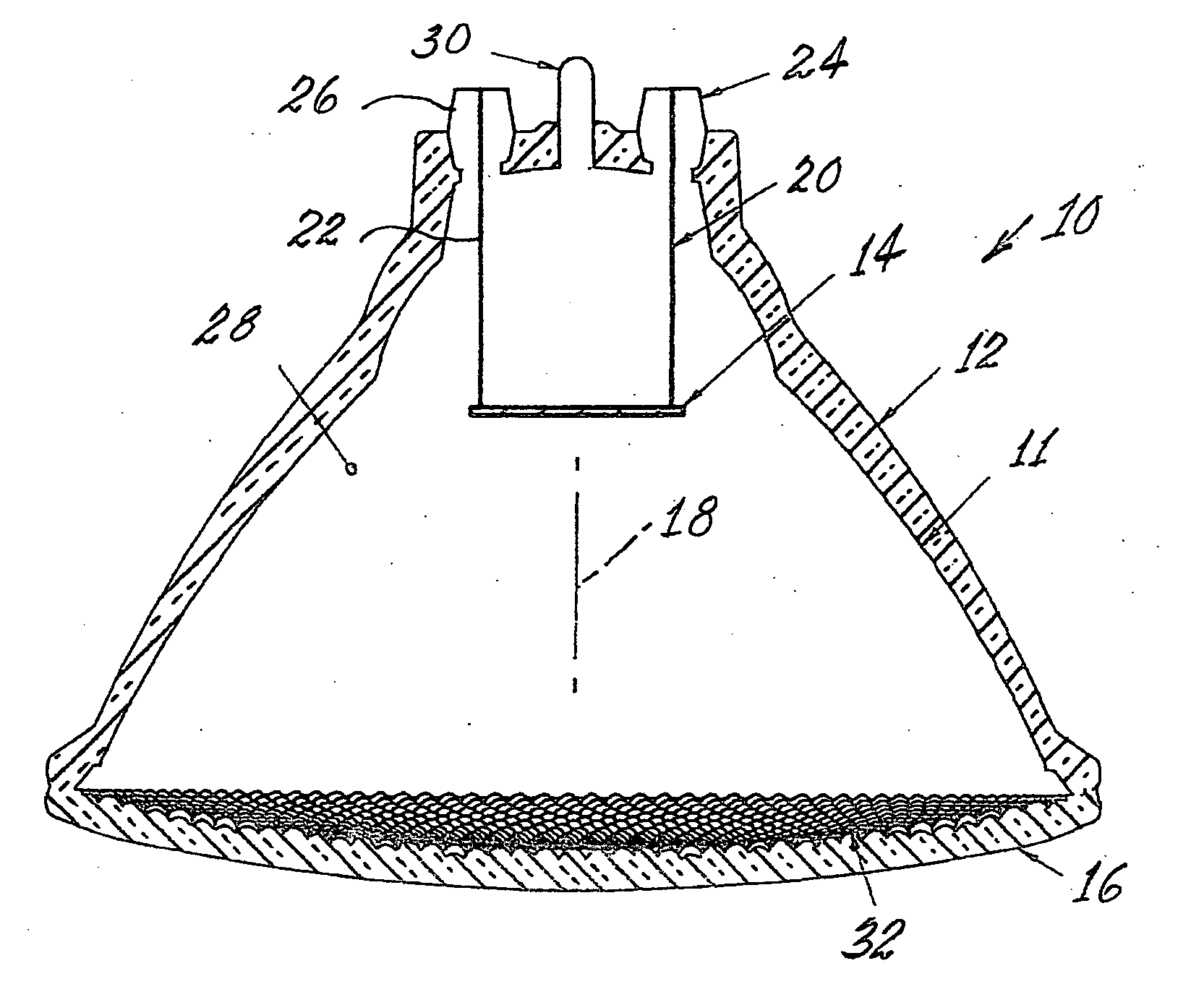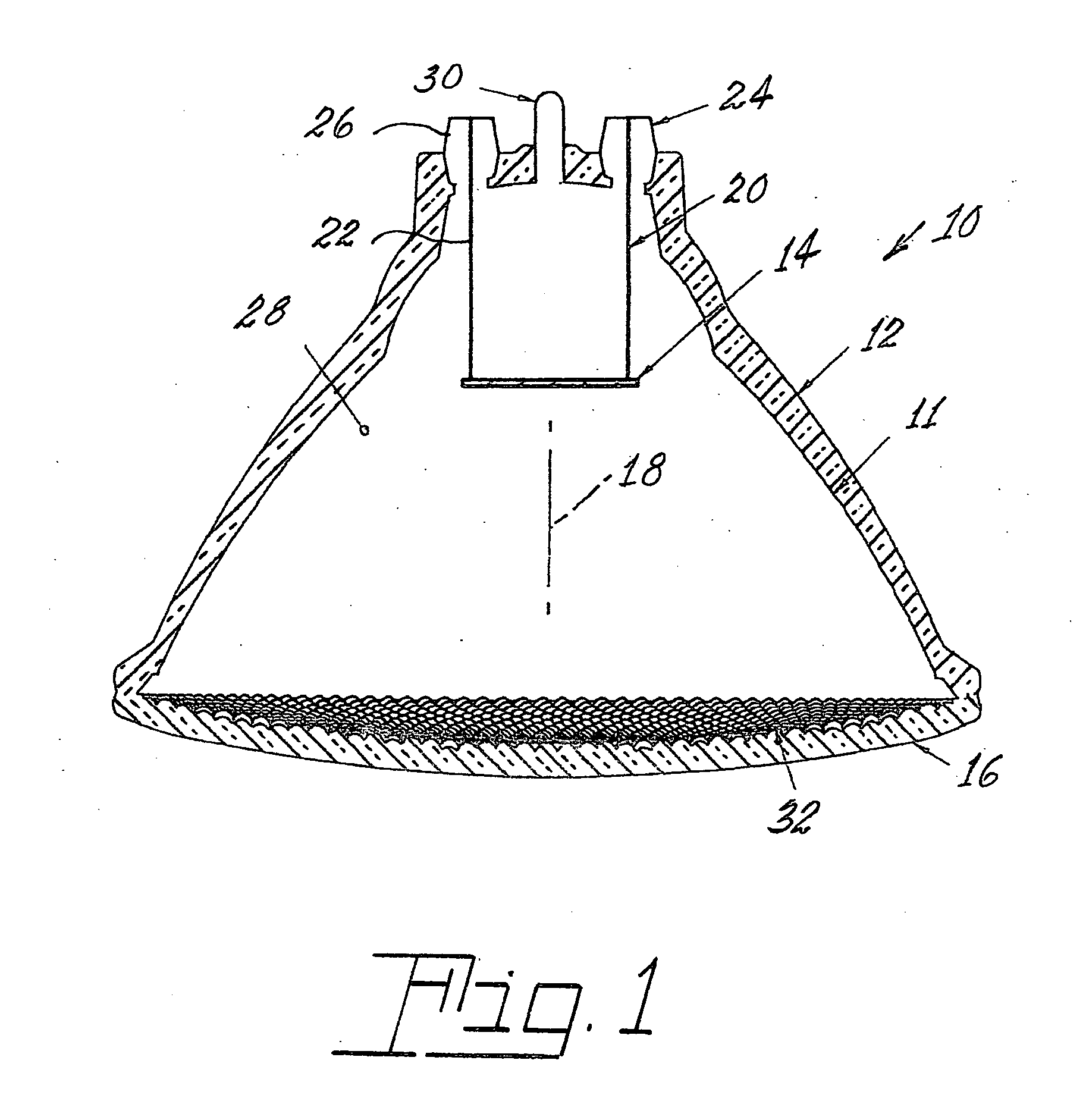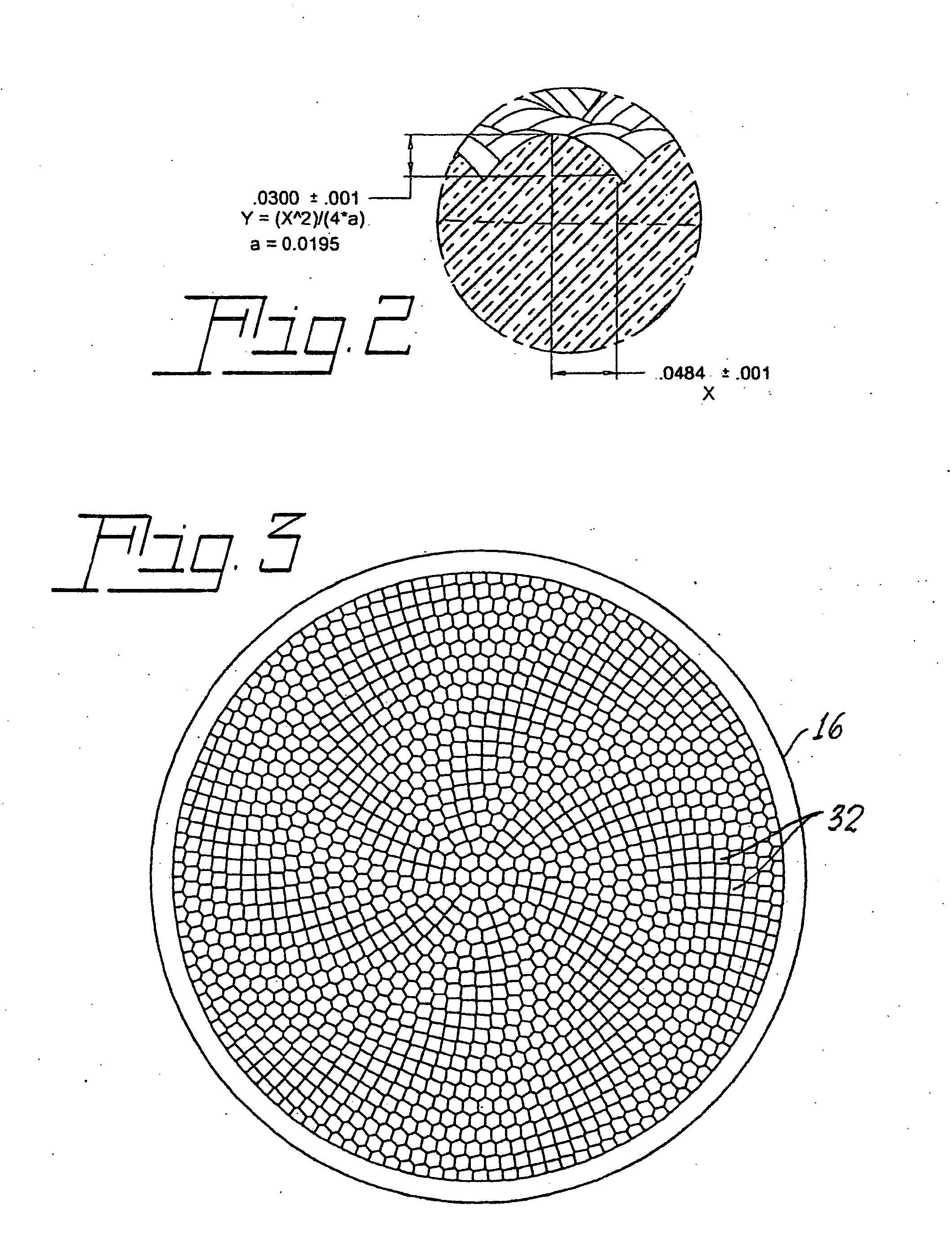Incandescent reflector heat lamp with uniform irradiance
a technology of incandescent reflectors and heat lamps, which is applied in the field of incandescent lamps, can solve the problems of inability to achieve a large area of uniform irradiance on a flat surface, the maximum bean spread is very limited, and the heat lamps currently available do not perform the desired function well
- Summary
- Abstract
- Description
- Claims
- Application Information
AI Technical Summary
Benefits of technology
Problems solved by technology
Method used
Image
Examples
Embodiment Construction
[0016] For a better understanding of the present invention, together with other and further objects, advantages and capabilities thereof, reference is made to the following disclosure and appended claims taken in conjunction with the above-described drawings.
[0017] Referring now to the drawings with greater particularity, there is shown in FIG. 1 a cross-section of an embodiment of the invention comprising an infrared emitting heat lamp 10 having a body 12 sealed to a lens 16. At least a portion of the inner reflector part 11 of body 12 has a parabolic configuration. This inner reflector part 11 can be coated with aluminum or other reflective material. An infrared heat source, such as a tungsten coil 14 is positioned near the focal point of the parabolically shaped reflector part 11 so that a substantial portion of the radiated power has a direction parallel to the lamp axis 18. The radiating source 14 is supported by in-lead wires 20, 22, which are brazed or otherwise affixed to m...
PUM
 Login to View More
Login to View More Abstract
Description
Claims
Application Information
 Login to View More
Login to View More - R&D
- Intellectual Property
- Life Sciences
- Materials
- Tech Scout
- Unparalleled Data Quality
- Higher Quality Content
- 60% Fewer Hallucinations
Browse by: Latest US Patents, China's latest patents, Technical Efficacy Thesaurus, Application Domain, Technology Topic, Popular Technical Reports.
© 2025 PatSnap. All rights reserved.Legal|Privacy policy|Modern Slavery Act Transparency Statement|Sitemap|About US| Contact US: help@patsnap.com



